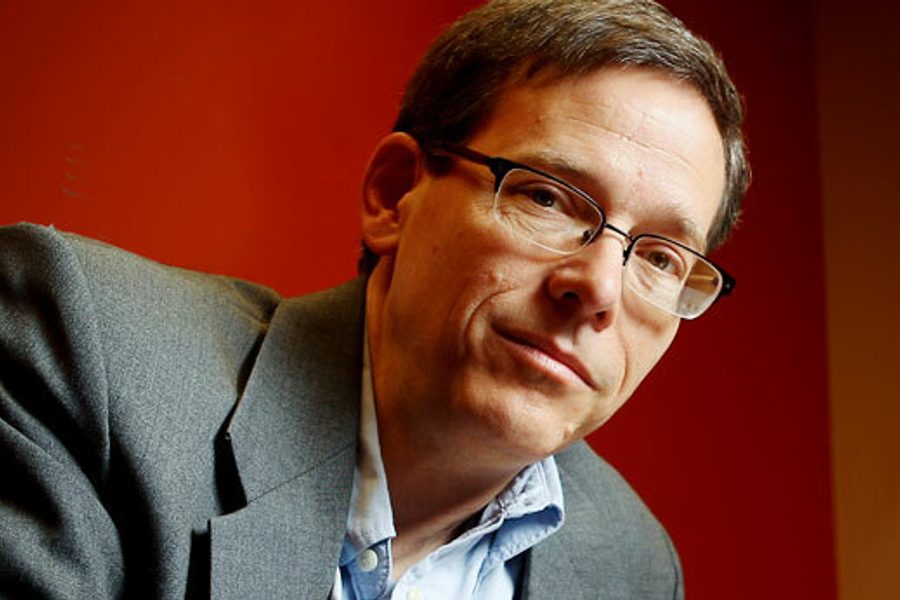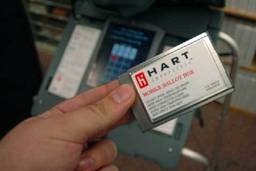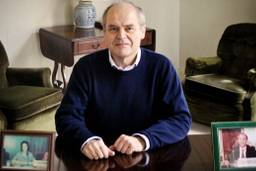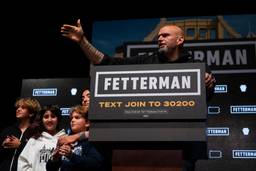A Haymarket Revisionary
Timothy Messer-Kruse raises serious doubts about one of the Left’s most precious myths.
George Kenney

Timothy Messer-Kruse, who is a professor and chair of the ethnic studies department at Ohio’s Bowling Green State University, says he has “always been politically active and very close to progressive causes.” But his recent work has raised serious doubts about one of the Left’s most precious myths. Last year, he published The Trial of the Haymarket Anarchists: Terrorism and Justice in the Gilded Age, which he had been working on for 10 years, and his newest book, The Haymarket Conspiracy: Transatlantic Anarchist Networks, comes out in August. Together, the two books offer a radically different interpretation of the Haymarket anarchists who were charged in the May 4, 1886, bombing of a demonstration, which resulted in the deaths of at least seven police and four civilians. For decades historians have portrayed the eight convicted anarchists, four of whom were hanged by the state of Illinois, as innocent martyrs, unjustly tried.
Messer-Kruse disagrees. He maintains that the available evidence indicates the anarchists were responsible for the bombing. His work raises fascinating questions about the way the past is romanticized, the radicalizing nature of Gilded Age poverty and why the United States hasn’t provided fertile ground to revolutionary vanguardism.
You’re upending a lot of history. For people who don’t make the connection, briefly describe the importance of May Day and how May Day came to be.
May Day was the Second International’s memorial to the Haymarket murders, to the labor leaders who lost their lives during the bombing in Chicago in May 1886 and as the result of the subsequent Haymarket court case. May Day was sort of a delayed outgrowth of the international movement to save the lives of the condemned men in Chicago.
But the history, almost universally, has been that these anarchists were wrongly accused, wrongly convicted and wrongly executed, right?
These days, yes. But for the first half century after the event, from the 1880s down to the early 20th century, you had two different historical memories of this event. You had those on the Left who were enshrining the memory of the martyrs. Then you had the general public, which believed they were rightfully executed terrorists. Indeed, the most popular view of them was probably that they were foreign terrorists and represented a foreign ideology.
You maintain that, in fact, the accused were guilty, and that the trial, given standards of the time, was reasonably fair. At what point did you realize that you were up against a massive accumulation of conventional wisdom?
From the outset, because this accumulated conventional wisdom was also in my head. After all, when I was in graduate school, a bunch of my friends and I jumped in a car and drove down to Chicago for the centennial observance at Waldheim Cemetery in 1986. I did not doubt any of the conventional wisdom, as you call it. Everything I’d ever read about it clearly indicated that there was no good evidence connecting any of these men to the crime, that it was a collective punishment, that they were railroaded to their deaths based on the first American red scare and the fervor surrounding that.
And then a student asked you, “Well if there was no evidence presented, what did they talk about for six weeks during the trial?”
I was teaching a labor history class, and a very precocious student asked me that question, and I had no answer. It’s taken me 10 years to finally get an answer.
The trial transcript is now easily available online, but that hadn’t been the case for many previous scholars.
No, it definitely was not. There were only two copies of the full trial transcript. One was at the Chicago History Museum. The other one was downstate at the Springfield archives. So it would have been very difficult for any researcher to really sit down and pour through the thousands of pages of transcript.
There was one passage in particular I found interesting. You write about the testimony of a fellow, Metzner, who had a shop across the street from where the bombing occurred. He went out the subsequent morning and observed a lot. Details come out that seem like conclusive evidence.
In those days roads were made of plank wood. And Metzner found the indentations where the bomb struck the street and then bounced and exploded. He was able to describe that in great detail. The indentations showed, because of the oblong nature of the indention in the wood, the direction from which the bomb was thrown. One of the major controversies in the trial was whether the bomb was thrown near the alleyway where the speakers’ wagon was, or whether it was thrown far down the block by a Pinkerton spy or a police provocateur. But this gentleman’s testimony didn’t make it into the most widely used sources that historians have used for the last century to discuss the Haymarket trial.
There was an abstract of the trial that was produced at the time of the appeals, and this abstract — this two-volume abstract — purported to contain the most important witness testimony. And it was the only published source on the actual testimony of the trial. However, nowhere on that abstract was it made clear that it was produced by the defense counsel themselves for the purpose of appeal.
To take the prosecution’s point of view, there is a ton of evidence. They caught these guys who had bomb-making materials, who were casting bombs, who had caches of dynamite, revolvers and ammunition. It wasn’t just one or two little pieces of evidence.
They had quite a bit of evidence. I want to add one caveat, though. The purpose of writing this book is not to retry the anarchists and to re-condemn them. I’m trying to illustrate what the trial represented in its own day, and to bring out facts about what actually happened in the trial.
But an important question does have to be retried — the philosophy of violence, because here we are celebrating the Haymarket anarchists and at their core they were advocating and practicing a philosophy of violence that has poisoned subsequent political engagement.
They were advocates of a particular philosophy of violence — vanguardist violence. It was that a small, committed group of individuals could employ violence to spark a general workers insurrection and lead the masses to their liberation. It was a proto-Leninist sort of a view that I think is particularly dangerous.
Did the Haymarket incident result in severing important ties between American and foreign labor movements?
It severed one particular tie, the connection between revolutionary anarchism in Europe and militant movements in America. Essentially, on May 3, the anarchists in Chicago were believers in vanguardist violence, believers in their ability to spark a general insurrection. But on May 5, the day following the bombing, they suddenly became democratic socialists. In their desperate attempt to save the lives of their leaders, they denied most of what they had once believed. And they began advocating a much more legalistic and peaceful path to social change.
No one in the United States, at least of that generation, had any further interest in building an international revolutionary movement along the lines the Haymarket anarchists had been trying to build in the 1880s. That movement just comes to a crashing halt.
Are you going to change the history, or will it take a number of decades?
What I hope happens is that this book sparks others to go back to the sources and re-evaluate not only this event but this whole interesting 1880s period of militancy across the United States. The Haymarket anarchists were putting their actions where their words were. It tells us that conditions in industrializing, urbanizing Chicago were so dire that a significant movement of individuals was willing to take up arms against it. That helps us understand just what the extremes of poverty and wealth in the Gilded Age really represent.
So you don’t want to disparage the ideals of labor organizing, but it’s fair to ask critical questions about methods?
Absolutely. Precisely.
This interview was adapted from a podcast at Electric Politics.

I hope you found this article important. Before you leave, I want to ask you to consider supporting our work with a donation. In These Times needs readers like you to help sustain our mission. We don’t depend on—or want—corporate advertising or deep-pocketed billionaires to fund our journalism. We’re supported by you, the reader, so we can focus on covering the issues that matter most to the progressive movement without fear or compromise.
Our work isn’t hidden behind a paywall because of people like you who support our journalism. We want to keep it that way. If you value the work we do and the movements we cover, please consider donating to In These Times.





